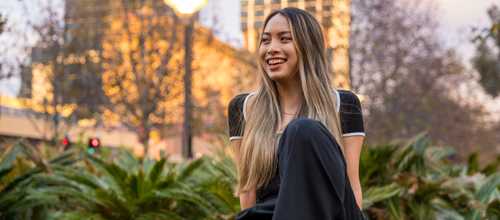06 August 2025
 New research by the University of South Australia finds a silver lining to the struggling media landscape in the face of the digital age, revealing that social media is enhancing the diversity of news the community receives.
New research by the University of South Australia finds a silver lining to the struggling media landscape in the face of the digital age, revealing that social media is enhancing the diversity of news the community receives.
The study found that Australian news is more diverse on social media, as the traditional media landscape – particularly quality local journalism – has become increasingly unsustainable.
Social media is the most popular way for Australians to find and consume news, with over 16 million active Australian users on the Facebook app alone.
The recent study, led by UniSA lecturer Cameron McTernan, examined more than 86,000 Facebook posts from Australian print, digital and TV newsrooms from 2010 to 2022.
“The study found that news shared on Facebook is much more diverse than news shared by traditional media, with many different news sources and voices,” McTernan says.
“In the first few years sampled, the three leading news pages on Facebook were ABC News, 9News and news.com.au, however, newer entrants like Daily Mail Australia and Sky News have since become highly popular.”
The majority of posts over the course of the study were shared by newspaper pages (56%); digital news platforms (37%) and TV (7%). Content shared by print and digital pages was overwhelmingly local, whereas TV had a strong metropolitan focus. TV and digital posts also had a stronger national focus.
“While Australia has long seen a decline in newsrooms and concentration in ownership, the results of this study show the potential for new entrants to succeed on a distributed access platform like Facebook.”
McTernan, who specialises in social media, political communication and media industries, says social media platforms have become a double-edged sword for the news economy.
“While social media can provide better discoverability of news, it also competes with traditional outlets for revenue. The two competing industries are struggling to find a cooperative path forward, and ultimately that hurts newsrooms a lot more than tech firms, and ultimately, it hurts all of us,” he says.
“Exposing the community to more diverse news sources benefits tolerance, encourages people to challenge biases and ultimately informs better decision-making and a more inclusive world. A viable media industry is also vital for supporting the economy and fulfilling a crucial role in democratic societies – including through its own contributions on social media.”
Big tech companies and traditional news outlets face ongoing tensions, particularly with Meta, the parent company of Facebook and Instagram, declining to pay for news in Australia. The company is set to stop paying publishers for content when current deals under Australia’s News Media Bargaining Code expire.
The Australian government announced a News Bargaining Incentive designed to encourage Meta and other platforms to contribute to the sustainability of the country’s news media, with a public consultation process expected to begin soon.
McTernan says while this move shows governments are supporting newsrooms, there has been a lack of quality data into the diversity of news content on digital platforms.
“The goal of my research was to understand whether Australian news on Facebook is truly diverse or dominated by a few big companies. We already knew that Australia has one of the most concentrated media markets in the world, so it was important to understand the scale, scope and structure of its social media news market, to help inform conversations and negotiations in this complex space.”
………………………………………………………………………………………………………………
Contact for interview: Cameron McTernan, Lecturer, UniSA Creative E: Cameron.mcternan@unisa.edu.au
Media contact: Melissa Keogh, Communications Officer, UniSA M: +61 403 659 154 E: melissa.keogh@unisa.edu.au



